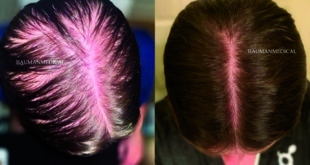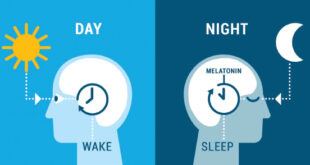 It’s a fairly common occurrence today to hear the phrase “we need to focus more on mental health”. However, that is typically where the conversation starts and ends. For those of us that are suffering, the pursuit of treatment can be exhausting and frustrating. We are usually left to figure out for ourselves where to go for treatment that usually starts with an internet search and ends with too many options for help, causing stress for our already stressed-out brains. As most of us have restricted financial resources, we look for the treatment that gets us the “most bang for our buck” and seek the answer to the ultimate question of…DOES IT WORK?
It’s a fairly common occurrence today to hear the phrase “we need to focus more on mental health”. However, that is typically where the conversation starts and ends. For those of us that are suffering, the pursuit of treatment can be exhausting and frustrating. We are usually left to figure out for ourselves where to go for treatment that usually starts with an internet search and ends with too many options for help, causing stress for our already stressed-out brains. As most of us have restricted financial resources, we look for the treatment that gets us the “most bang for our buck” and seek the answer to the ultimate question of…DOES IT WORK?
Because of this, we are frequently asked to explain Neurofeedback and then to show the results of training to confirm that it is working. To do that, I’ll start by explaining Neurofeedback:
We are frequently asked to explain Neurofeedback and then to show the results of training to confirm that it is working. So let’s start by explaining Neurofeedback:
Neurofeedback, also called EEG Biofeedback or Brain Training, is not a new or experimental treatment. In the 1960’s, research into the behavior of neuron firing was sought out to help astronauts keep their brains regulated while being exposed to conditions that were causing seizures. Medication in these cases was not ideal, and NASA was searching for an alternative treatment. While changing from treatment on cats to treatment on humans, it was then noticed that with improved regulation, many unpleasant symptoms and conditions had unexpectedly improved. Research and treatment flourished, and it is gaining popularity and becoming more known through word of mouth.
IS IT THE SAME AS BIOFEEDBACK?
Biofeedback is a very broad term that is used to describe a technique that allows you to learn information about your body and with Neurofeedback, we zero in on the neuron firing in the brain. Therefore, Neurofeedback is a technique that allows you to learn information about your brain. Or more specifically, the neuron patterns in your brain. At times, Neurofeedback can be referred to as EEG Biofeedback or Brain Training.
CAN IT HELP ME?
Neurofeedback teaches your brain to be more balanced and better regulated. When this improved balance and regulation happens, you feel better and function better. Training your brain can help clients of all ages, as everyone can benefit from balancing and regulating their brain better. Because no two brains are alike, no two treatments are the same. Every client that we treat is an individual with a unique brain and unique symptoms.
We list some symptoms and conditions that are given popular labels.
• Anxiety • Sleep Disorders • Depression • ADD/ADHD
• Sensory Processing Disorder • Bipolar Disorder
• Seizure Disorders • Auditory/Visual Processing • Chronic pain/Fibromyalgia • Migraines/Headaches
• Traumatic Brain Injuries • Stroke
• Cognitive Decline • Peak Performance
• Oppositional Defiant Disorder • Rages/Mood Swings
• Attention/Focus/Concentration
• Reactive Attachment Disorder • Autism/Asperger’s
• Learning Disabilities • Obsessive Compulsive Disorder
WHAT EXACTLY IS NEUROFEEDBACK?
Neurofeedback is often referred to as exercise for your brain. While allowing you to see the frequencies produced by different parts of your brain in real-time and then through visual and auditory feedback, it teaches the brain to better regulate itself. Neurofeedback can be used to help detect, reward, and/or inhibit activity in the brain safely and without medication. It can help restore a wider “range of motion” in brain states, much like physical therapy does for the body.
While the client sits comfortably watching a movie or pictures appear on the screen (a calm and focused state), the EEG equipment measures the frequency or speed at which electrical activity moves in the areas where electrodes have been placed. This information is sent to the therapist’s computer. The therapist is then able to determine what frequencies are out of balance. For example, when the EEG shows that you are making too many “slow” or “sleepy” waves (delta/theta) or too many “fast” waves (high beta), the therapist adjusts a reward band to encourage more balanced activity. This encouragement or “reward” happens through an auditory reinforcement of “beeps” and sometimes through visual reinforcement of changes on the screen.
I DON’T GET IT, HOW DOES A “BEEP” OR SOUND TRAIN MY BRAIN TO WORK BETTER?
The auditory or sound reward that corresponds to an increase or decrease in desired brainwave activity, affects the brain on a neurological level. Auditory reward stimulates auditory pathways, impacts the vestibular system, and has many connections to the reticular activating system, which modulates wakefulness and attention. These systems operate in our brains without conscious effort. Therefore, neurofeedback teaches your brain through automated learning with little or no behavioral intervention. Another way to say this is that neurofeedback involves operant conditioning or learning. This type of learning teaches us through a reinforced reward system. The auditory reward (beep) is delivered on a schedule of reinforcement that promotes optimal learning; not too hard and not too easy. This schedule of reinforcement or reward provides just the right amount of resistance to evoke a positive learning pattern.
Now comes the point where we determine if Neurofeedback is working.
Mental clarity improves when you operate a calmer, more efficient brain. As you learn to slow down “inner chatter” or activate a “sleepy” brain, you become more effective at responding to stress and adapt more readily to different situations, both psychologically and physically. Parenting becomes less exhausting, appointments are more easily kept, decision-making improves, and mood swings and depression often lift.
Neurofeedback has also been shown to be of remarkable value with school-age children who experience focus and learning problems. Through brain training, children can learn to better concentrate on schoolwork, increase their frustration tolerance level, and are less prone to being overwhelmed with sensory overload while seated in a noisy classroom. With their thoughts more organized, they can focus more clearly on what others say to them and can begin to develop friendships and learn effectively.
As the brain learns, you will see the changes. However, everyone learns at different speeds, so it cannot be determined how quickly someone will learn. On average, children take about 10-20 sessions to definitively see changes, and we can discuss what to expect during the intake appointment. For adults changes are usually noticed within 10 sessions. Total treatment can be an average of 40 sessions; however, we individualize treatment – some people need more and some less.
WHAT IS A QEEG (QUANTITATIVE EEG)
OR BRAIN MAP AND DO I NEED ONE?
The QEEG is a quantitative EEG. It’s also called a brain map and does just that…it gives us a map of what is going on with the entire brain at one time. We attach electrodes to the whole head, 19 spots, and then record the brain waves with his eyes open for 5 minutes and with his eyes closed for 10 minutes. This recording is then sent to be read and analyzed. The brain activity is not only compared spot by spot over the entire head, but we can also look at connections, symmetry, how different parts are communicating, and then this data is compared to a database of peers (same sex, handedness and age). It can help us see what areas need to be addressed more efficiently than just training spot by spot.
We don’t always need this data to make an improvement in symptoms, but we do recommend it in certain situations. QEEG can also be helpful information when diagnosing and/or trying to decide the best medication/supplement recommendations.
DOES NEUROFEEDBACK HURT OR HAVE SIDE EFFCETS?
Neurofeedback is a non-invasive, non-medication, and most importantly a non-painful approach. Your experience will be very relaxing and positive. We gently teach your brain how to regulate more efficiently and do not force your brain into a brain state that is not comfortable. Because Neurofeedback teaches your brain how to regulate more efficiently, rather than forcing your brain to change patterns, there are no permanent negative side effects. As previously mentioned, no two brains are alike, therefore, we adjust treatments to fit the client, not the other way around and we are committed to making sure your learning is optimal, and your experience is positive.
IS THERE ENOUGH RESEARCH?
Neurofeedback has been researched since the 60’s. Here are some resources for research. We have several journal articles, studies, and books in our office for you to enjoy, however because of the amount of information out there, we cannot possibly have everything. Here are a few resources.
Look up the work of:
Dr. Joe Kamiya and Dr. Barry Sterman (Credited for earliest development of Neurofeedback).
Look for specific researched conditions:
https://www.eeginfo.com
http://www.eegspectrum.com
Print Resources:
Journal of Neurotherapy
NeuroRegulation Journal
Applied Psychophysiology and Biofeedback
Books:
A Symphony in the Brain by Jim Robbins
Healing Young Brains by Robert Hill & Eduardo Castro
The Healing Power of Neurofeedback by Stephen Larsen
Neurofeedback in the Treatment of Developmental Trauma by Sebern Fisher
Neurofeedback 101: Rewiring the Brain for ADHD, Anxiety, Depression and Beyond (without medication) by Michael P. Cohen
HOW DO I GET STARTED?
Getting started is easy, just contact us. The Brain and Wellness Center staff will schedule you for a FREE telephone consultation to answer your questions, and help you get scheduled. Email or text message us today! Brain and Wellness Center, 5458 Town Center Rd, Suite 13, Boca Raton, FL 33486. E-mail us at
info@bocabraincenter.com, or text us at (561) 206-2706 or visit our website at www.BocaBrainCenter.com.
Renee Chillcott, LMHC
Renee Chillcott is a Licensed Mental Health Counselor that has been practicing Neurofeedback training since 2005. Renee holds a BA degree from The University of Central Florida and a Master’s Degree in Psychology/Mental Health Counseling from Nova Southeastern University. She is a Licensed Mental Health Counselor and is the owner/operator of The Brain and Wellness Center, located in Boca Raton. At the Brain and Wellness Center, adults, teens, children and families enjoy a variety of services from multiple providers. Neurofeedback, Brain Mapping, SSP, EMDR, Learning Programs, and counseling are among a few of the services offered.
5458 Town Center Road, Suite 13
Boca Raton, FL 33486
(561) 206-2706
www.BocaBrainCenter.com
 South Florida Health and Wellness Magazine Health and Wellness Articles
South Florida Health and Wellness Magazine Health and Wellness Articles




